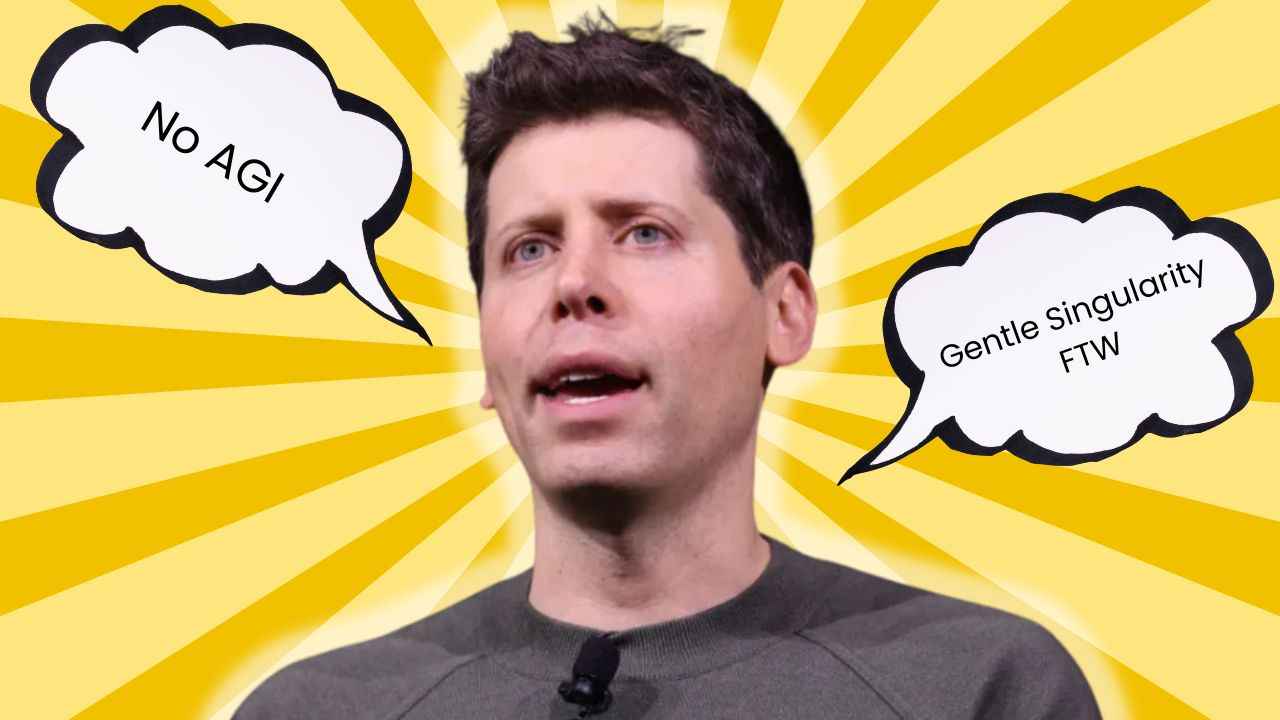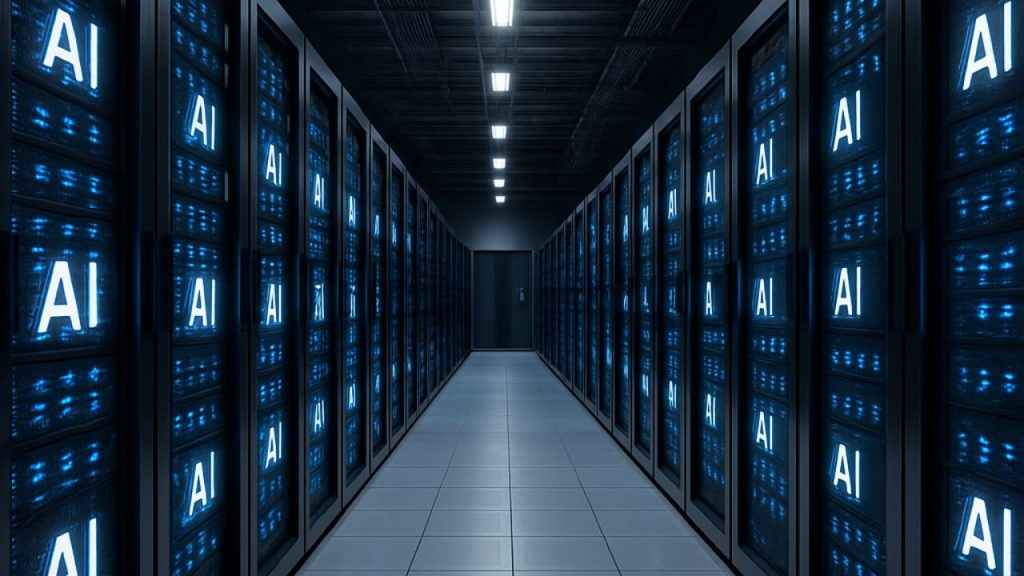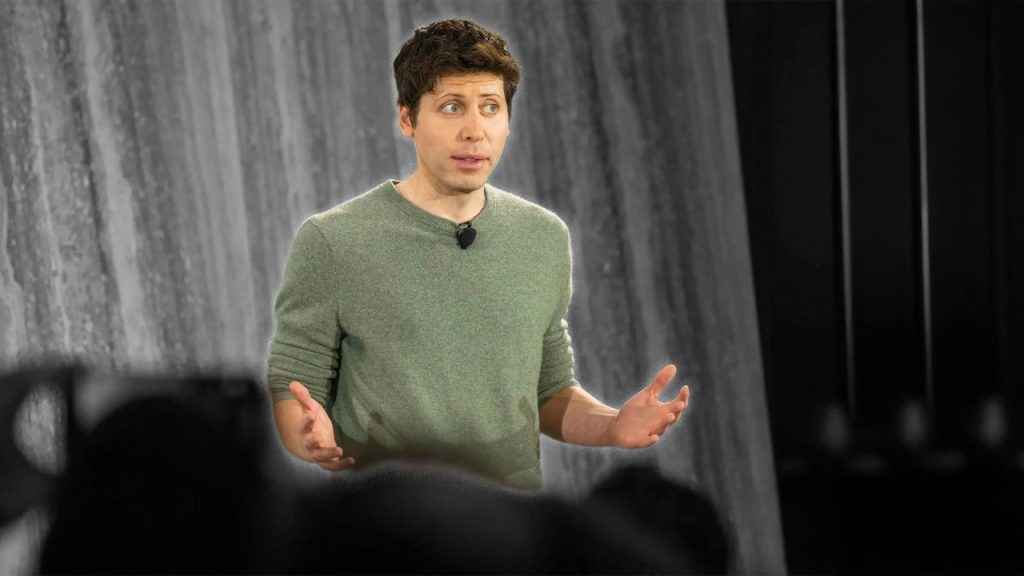What is Gentle Singularity: Sam Altman’s vision for the future of AI?
Sam Altman talks about "A Gentle Singularity, his vision for the future.
Robots and datacenters that build themselves, pushing intelligence to near zero cost.
Alignment, abundance, and humanity: Even as AI grows, our shared spark stays central.

When we talk about the future of artificial intelligence, the imagery usually veers towards either a blindingly bright utopia or a stormy dystopian horizon. But Sam Altman, the CEO of OpenAI, offers a vision that’s somehow more grounded and more fantastical at the same time, a “gentle singularity” that’s both incremental and revolutionary.
 Survey
SurveyHis latest blog post outlines a future where intelligence becomes as abundant as energy, and where the changes sneak up on us, bit by bit.
Here are three key takeaways from his bold blueprint for the AI-powered decades ahead.
1) AI’s singular future won’t be about a singular moment
Altman dismisses the idea of a sudden AI “takeover” or a single, world-shaking event. Instead, he describes a future unfolding like a sunrise, a gradual, gentle singularity. “The singularity happens bit by bit,” he writes, with small wonders becoming routine, and each new breakthrough laying the groundwork for the next. It’s already here in some ways: code-writing agents, AI medical diagnoses, tools that amplify human creativity. These incremental steps don’t feel like sci-fi until you zoom out and see the cumulative curve.
Also read: Sam Altman’s AI vision: 5 key takeaways from ChatGPT maker’s blog post
In some ways, this Sam Altman’s vision is less about machines seizing control and more about a quiet transformation: “A lot more people will be able to create software, and art,” he writes in his blog, but at the same time, the world will want more of both. Experts will still have a role if they’re willing to embrace the new tools. The bigger picture is a future where everyone’s baseline capability goes up, and expectations rise to meet it.
2) Recursive loops: AI, building AI, building the world
One of the most striking ideas Altman explores is the recursive self-improvement loop, not in the sci-fi sense of runaway superintelligence, but in the real-world sense of robots and datacenters that can build each other. He points to a future where humanoid robots aren’t just helpers but full participants in the supply chain: mining, refining, manufacturing. And datacenters, the brains of AI, could eventually become self-replicating, driven by the same loops of exponential growth.

Also read: OpenAI’s o3 model bypasses shutdown command, highlighting AI safety challenges
This isn’t just an abstract concept. Altman believes that once we reach the point where “datacenter production gets automated,” the cost of intelligence will collapse to nearly the cost of electricity. He even shares a neat stat: one ChatGPT query today uses about 0.34 watt-hours, just a second or two of your oven’s time. If intelligence becomes as cheap as flipping a light switch, the downstream effects on the economy and daily life will be profound.
3) Alignment, Abundance, and the enduring human spark
But Altman doesn’t shy away from the elephant in the room: alignment. He sees it as the most critical challenge ahead, making sure these immensely powerful systems don’t just chase short-term dopamine hits (like endless social media scrolling) but truly learn what we want, collectively, in the long term. Alignment, for Altman, is the moral linchpin of the AI revolution.
And even as intelligence and energy become “too cheap to meter,” he insists that humans will keep their central role. We’re hardwired to care about each other in ways machines aren’t. The “fake jobs” of tomorrow, he suggests, occupations that might seem absurd to someone from the past, will still feel vital and fulfilling because they tap into that deep well of human creativity and community.
Also read: WWDC 2025: Apple highlights AI in apps, but not in Siri
Gentle singularity and the future of AI
Reading Altman’s vision, you get the sense of a future that’s both exhilarating and comfortably human. Sure, by 2035 we might be exploring the cosmos or wiring our brains directly to the internet. But we’ll still be swimming in lakes, playing games, and expressing our creativity, using tools that once seemed like magic.
“The gentle singularity,” as Sam describes it, is the idea that we are entering a period of exponential technological progress – not as a single explosive event, but as a gradual and seamless shift. Unlike the sudden takeover scenarios often associated with AI, this singularity emerges bit by bit. AI systems amplify our abilities, automate more tasks, and recursively improve themselves, all while humans adapt and integrate these tools into daily life. Altman believes this process won’t feel like a disruption but more like a steady climb – a continuous unfolding of new possibilities that reshape how we live, think and work.

Also read: ChatGPT can now record meetings and read your Google Drive to answer work questions
Altman’s singularity isn’t the loud, cinematic kind. It’s a steady march towards abundance, one that hinges on alignment, good governance, and the uniquely human spark that no amount of code can replicate. He paints a picture of a world transformed by AI, one where intelligence becomes plentiful, creativity flourishes, and progress accelerates at a breathtaking pace. He’s a techno-optimist, but a cautiously grounded one, recognizing both the immense promise and the genuine risks. Will we live in the future he describes? Only time and how we navigate these powerful new tools will reveal the answer.
Vyom Ramani
A journalist with a soft spot for tech, games, and things that go beep. While waiting for a delayed metro or rebooting his brain, you’ll find him solving Rubik’s Cubes, bingeing F1, or hunting for the next great snack. View Full Profile